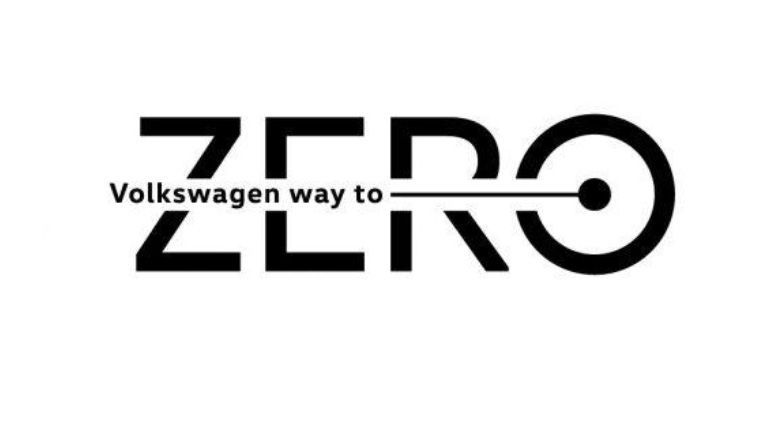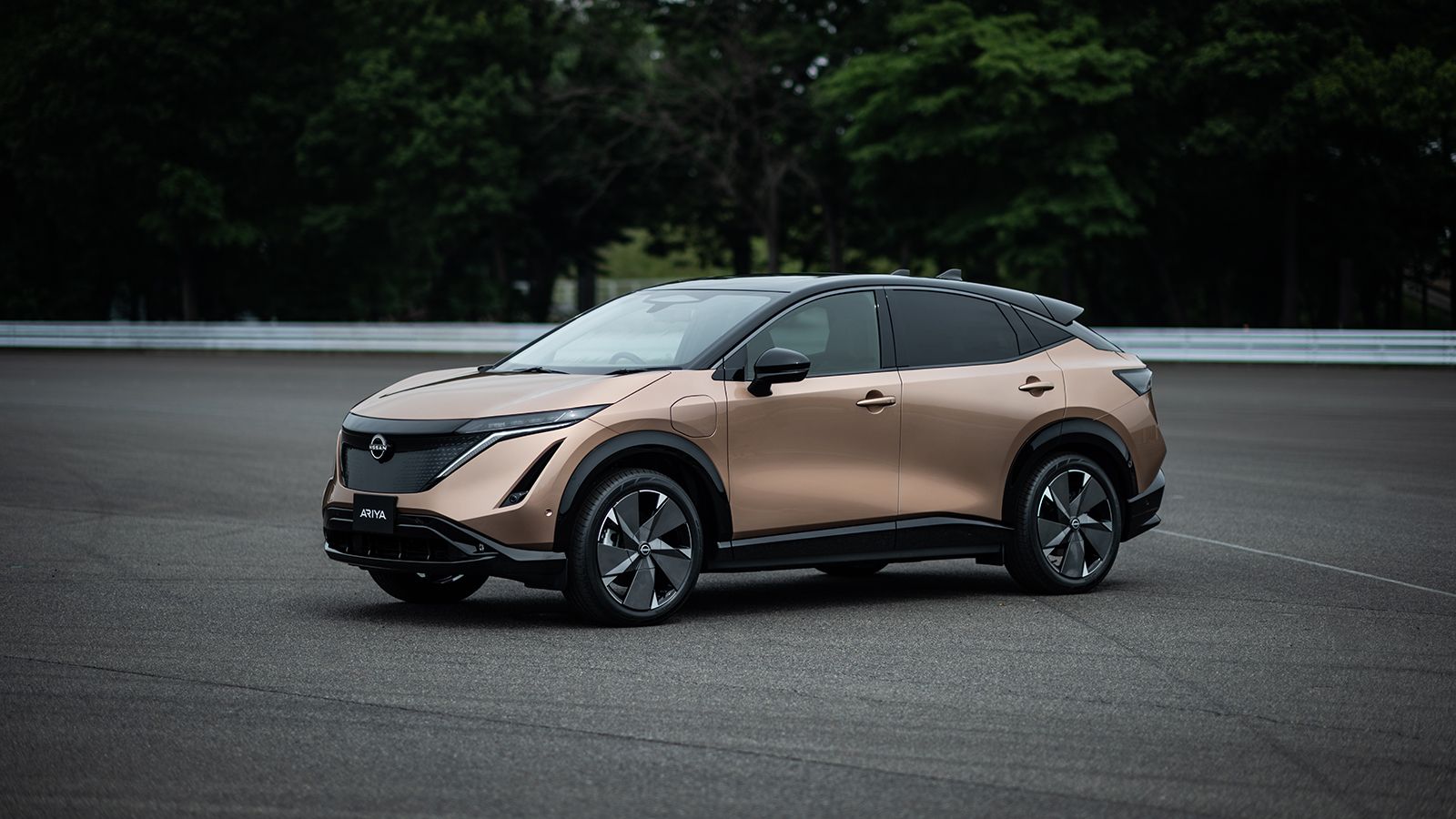Volkswagen way to zero что значит
Way to Zero: Volkswagen presents roadmap for climate-neutral mobility
At the first Way to Zero Convention, Volkswagen today gave details of its plans for decarbonizing the company and its products. The company intends to be net carbon neutral by 2050 at the latest. A new interim milestone is the targeted 40-percent reduction in CO2 emissions per vehicle in Europe by 2030 – substantially outperforming the Group target of 30 percent (baseline: 2018). As a result, an average Volkswagen would emit around 17 tons less carbon dioxide. As well as accelerating the transition to e-mobility, the production (including supply chain) and operation of electric cars is to be made net carbon neutral. Added to this is the systematic recycling of the high-voltage batteries from old electric vehicles.
«Volkswagen stands for sustainable e-mobility for all. We’ve set out on the ‘Way To Zero’ and are consistently placing the environment at the focus of all our activities,” said Ralf Brandstätter, CEO of Volkswagen. “Our big electric offensive was just the start. We’re taking a holistic approach to decarbonization: from production through service life to recycling. And we’re the first car maker to support the expansion of renewable energies on an industrial scale.”
Volkswagen supports the construction of wind farms and solar plants
A key factor in achieving carbon-neutral e-mobility is to be able to charge vehicles consistently with electricity generated entirely from renewable sources. This alone would reduce CO2 emissions by almost half compared with the standard EU electricity mix. Already today, Volkswagen offers its customers green electricity for charging at home (Volkswagen Naturstrom) and on the road (e.g. at IONITY charging stations). The company is now going one step further. Volkswagen is the first car maker to directly support the expansion of renewable energy on a large scale. As a result, new wind farms and solar plants are to be constructed in several regions of Europe by 2025.
Contracts for the first projects have already been signed with energy company RWE. In Germany, Volkswagen is supporting the construction of a solar plant with a total capacity of 170 million kilowatt hours each year. The associated plant will be completed in Tramm-Göthen in northeastern Germany by the end of 2021 and is being constructed without any state subsidies at all. Incorporating around 420,000 solar modules, it is the largest independent solar project in Germany.
It is planned that all projects together will generate around seven terawatt hours of additional green electricity by 2025. The amount of renewable electricity going into the grid will grow in parallel with the number of ID. vehicles. In this way, Volkswagen is improving the climate footprint of the ID. family and creating the basis for the net carbon neutral use of its electric fleet.
Green production and supply chain
This year already, Volkswagen will be switching to other sustainable components in its ID. vehicles, including battery housings and wheel rims made from green aluminum and tires from low-emission production. There are more than ten focus components which will enable us to improve the carbon footprint of the ID. family by around two tons per vehicle in the years ahead. When it comes to new vehicle projects, Volkswagen will be making CO2 emissions a key criterion in awarding contracts to suppliers. In this way, the company intends to work with its suppliers to gradually improve their carbon footprint and ensure the sustainability of its supply chain. The company is also pursuing a clear decarbonization strategy in the in-house production of components at Volkswagen Group Components. As such the giga-factories for battery cell production announced during Power Day are to be supplied with entirely green electricity.
The systematic recycling of batteries, which will allow more than 90 percent of raw materials to be reused in the future, is intended to make a further contribution to reducing CO2 emissions. The goal is a closed loop for the battery and its raw materials that the company has at its own disposal across the Group. Volkswagen Group Components is already operating an initial recycling facility in Salzgitter.
Accelerating the electric offensive
Way to Zero Convention for an open dialog with government, industry and society
“The ‘Way to Zero’ is our roadmap for effective climate protection, with clear and ambitious milestones. We live up to our responsibility for the environment. The ‘Way to Zero’ will provide us with a real competitive advantage. In the future, employees, customers and investors will give preference to those companies which place their social and environmental responsibility at the heart of their business. Sustainability will thus become a crucial factor in corporate success,” said Ralf Brandstätter. “However, Volkswagen cannot shoulder the decarbonization of mobility on its own. Government, industry and society need to come together to develop good ideas and make courageous investments.”
With the Way to Zero Convention, Volkswagen aims to foster an open dialog with government, industry and society. The day-long event, which was entirely digital due to the coronavirus pandemic, was attended by more than 20 speakers from political parties, NGOs, scientific institutions and other companies alongside representatives of Volkswagen.
Volkswagen way to zero что значит
Текущая неделя выдается довольно насыщенной на инфоповоды касательно электрического транспорта. Вчера компания Opel представила электрокроссовер Mokka и огласила его стоимость, чуть позже Tesla провела собственное мероприятие Tesla Battery Day, теперь же Volkswagen официально презентовала ID.4.
Volkswagen уже тизерила внешний вид и интерьер ID.4, но теперь у нас появилась возможность рассмотреть его в деталях. Внешне автомобиль напоминает слегка увеличенную версию ID.3, что и не удивительно. Кузов имеет плавные линии, по периметру предусмотрена пластиковая защита. Особенно выделяется LED-оптика спереди и сзади, которая визуально соединена тонкими линиями. IQ.Light LED матричные фары умеют вырезать встречные машины и объекты на дороге, а также интересно приветствуют водителя, поворачивая светодиодные модули.
В салоне всё по-немецки минималистично, но в то же время выглядит стильно, особенно в варианте с белым рулевым колесом и такими же светлыми акцентами. Не знаю насколько практичен такой вариант, но смотрится нарядно. Перед водителем расположен 5.3″ дисплей приборной панели с рычагом переключения режимов езды, а по центру торпедо находится 10″ или 12″ экран мультимедийной системы. Под лобовым стеклом есть светодиодная полоса, которая реагирует на голосовые команды водителя. Также предусмотрена система Head-up Display с технологией дополненной реальности.
ID.4 построен на платформе MEB, разработанной для электрокаров. Длина автомобиля составляет 4.58 метра, объем багажного отделения составляет от 543 до 1575 литров. Коэффициент аэродинамического сопротивления — 0.28, дорожный просвет — 21 см. Для водителя будет полезным набор технологий безопасности IQ.Drive, которые помогают во время движения.
Кроссовер оборудован электрическим мотором мощностью 150 кВт (204 л.с.), который установлен на задней оси. Разгон от 0 до 100 км/ч занимает 8.5 секунды, максимальная скорость — 160 км/час. Максимальная емкость устанавливаемых аккумуляторов может составлять 77 кВт*ч, что дает порядка 520 км запаса хода согласно циклу WLTP. Поддерживается как AC, так и DC-зарядка мощностью до 125 кВт. Последняя позволяет зарядить электрокар от 5% до 80% чуть более чем за полчаса.
Как вам новый Volkswagen ID.4? Какой бы кроссовер выбрали, ID.4 или Opel Mokka? Делитесь впечатлениями в комментариях!
Новый проект «Vision Zero» от Volkswagen
Концерн Volkswagen представил проект «Vision Zero», в рамках которого будут разработаны и внедрены в автомобили новые системы безопасности. Так, машины смогут самостоятельно выезжать с узких парковочных мест по команде со смартфона или в полностью автоматическом режиме проехать участки дорог, где ведутся ремонтные работы.
Помимо этого, вместе с электронными системами, которые смогут обнаруживать пешеходов и задействовать тормоза, если водитель не успеет вовремя среагировать на опасность, в «Фольксвагене» намерены сделать серийными системы, способные полностью взять контроль за машиной на себя, когда водитель находится в критическом состоянии и не может сам справиться с управлением.
Как сообщалось ранее, концерн Volkswagen ведет разработку автопилота. Электроника будет способна самостоятельно управлять автомобилем при движении на автомагистралях на скорости до 130 километров в час. Машина с такой системой сможет сама соблюдать безопасную дистанцию до едущих впереди автомобилей, поддерживать заданную водителем скорость, самостоятельно снижать ее при приближении поворота и удерживает машину посередине полосы в соответствии с разметкой.
Аналогичные системы появятся и на моделях марки Audi, входящей в состав концерна Volkswagen. Например, машины этого бренда получат автопарковщик, который не требует нахождения водителя в салоне. Благодаря специальным сенсорам автомобили с этой системой смогут сами найти свободное место в многоярусном гараже, припарковаться, выключить мотор и запереть двери.
‘Volkswagen Way to Zero’ Trademark Points to EV Rollout Campaign
Here’s when we’ll see Volkswagen’s first ID-branded EV crossover in the States.
Volkswagen’s journey from the diesel crisis to the upcoming market debut of several EV models in Europe and the U.S. has not been easy, but Wolfsburg is rolling ahead and debuting several different models. The first on this side of the Atlantic is going to be the ID.4 electric crossover. Set to challenge several more-affordable electric crossover models including the Tesla Model Y and the Nissan Ariya when it goes on sale, the ID.4 will offer buyers an easy way into EV ownership.
It’s safe to say this launch is going to require a massive messaging campaign from VW to promote its new electric offerings, likely the biggest campaign the automaker has launched in decades. And just what the rollout could look like was revealed in a recent trademark filing spotted by the VW ID Talk forum. A recently filed trademark in Europe has revealed a logo for what could be the slogan of VW’s electric push: Volkswagen Way To Zero. This logo and slogan could be part of a large media effort to promote the automaker’s zero emissions efforts, and it coincides with the long-awaited market debut of the ID.3 hatch in Europe.
As for the logo itself, the phrase «way to zero-emission mobility» was heard just a few months ago, when Ralf Brandstätter was announced as Volkswagen brand CEO. The formal name for the larger strategy is Transform 2025+.
«After a record year in 2019, the brand is outstandingly well-positioned for the future,» the automaker said in June. «Volkswagen has successfully completed the first phase of the Transform 2025+ strategy. The company is now embarking on the next phase. The broad-based electric offensive will now become tangible with new vehicles on the roads. Volkswagen is paving the way to zero-emission mobility for everyone. By 2025, at least 1.5 million electric cars are to be sold. In addition to electrification, the brand will also forge ahead with digitalization over the coming years.»
Filing the Volkswagen Way To Zero trademark follows a number of other recent trademarks including e-Beetle, e-Samba, e-Karmann, e-Kübel and e-Golf Classic. These are thought to refer not to actual VW electric vehicles the automaker is putting into production but conversions of classic models, one of which VW showed last year.
How does Brandstätter envision the Transform 2025+ strategy?
«For Volkswagen, the course towards the future has been set. On the basis of the Transform 2025+ strategy, the brand is developing into one of the leading providers of carbon-neutral mobility and is on the way to becoming a digital technology company. I would like to thank the entire Volkswagen team for their tremendous commitment. We will follow our path resolutely together,» said Brandstätter.
Filing the trademark follows actual opening orders for the ID.3 hatch in Europe three weeks ago, with the first examples scheduled for delivery in October.
“The Zwickau plant is already ready for 100% e-mobility,» said Volkswagen Brand Board Member for E-Mobility Thomas Ulbrich. «For the ID.3, we are focusing production on the most popular battery variants and equipment levels. In addition, customers have a free choice of colors, exterior styling packages, wheel rims and interior equipment as well as other individual options such as a heat pump and the popular bicycle carrier preparation option. Thanks to the use of renewable energy for vehicle and battery production, the ID.3 has a neutral carbon balance.»
The ID.4 is expected to land here late this year, with the first year or so of production coming from Europe. In 2022 VW plans to begin production of the ID.4 in Chattanooga — a move announced in late 2019.
Volkswagen – Way To Zero
Campagne Volkswagen conçue par DDB Paris
Dispositif TV, web, réseaux sociaux, print
Première diffusion 3 mai 2021
Aujourd’hui les industriels ont un rôle à jouer dans la transition écologique, ils doivent changer. Volkswagen l’a bien compris (!) et s’engage avec une ambition forte : la mobilité neutre en carbone d’ici 2050. Même si ça peut paraître loin, et que les efforts devront s’intensifier encore, il n’est pas trop tard pour gagner le défi de la transition automobile. Pour cela, la marque ne se contente pas de produire plus de véhicules électriques mais adopte une démarche plus globale. Avec son programme Way to Zero, Volkswagen repense la façon de construire ses véhicules avec un bilan carbone neutre, de les faire avancer avec de l’électricité verte et même de les faire disparaître avec un programme de recyclage. Pour annoncer tous ces efforts, et mettre l’accent sur ceux de ses clients pour changer les choses, Volkswagen prend la parole à travers une campagne grand public imaginée par DDB Paris articulée autour de deux films réalisés par Cloé Bailly (Caviar). « Patience » met en scène un couple attendant que sa voiture maculée de boue et de poussière soit lavée par la pluie, malgré l’opprobre des voisins. « Promenade » montre que ce n’est pas si difficile d’aller chercher le pain à pieds au lieu de prendre la voiture, la seule difficulté étant de ne pas tout manger en chemin. Des situations quotidiennes qui trouvent un écho en chacun de nous, filmées en plan fixe sans artifices selon le choix de la réalisatrice pour mettre en valeur le jeu des acteurs. Un regard à la fois bienveillant et réaliste sur les gestes du quotidien des hommes et femmes de bonne volonté pour un monde meilleur, en parallèle avec les preuves du programme Way To Zero.







